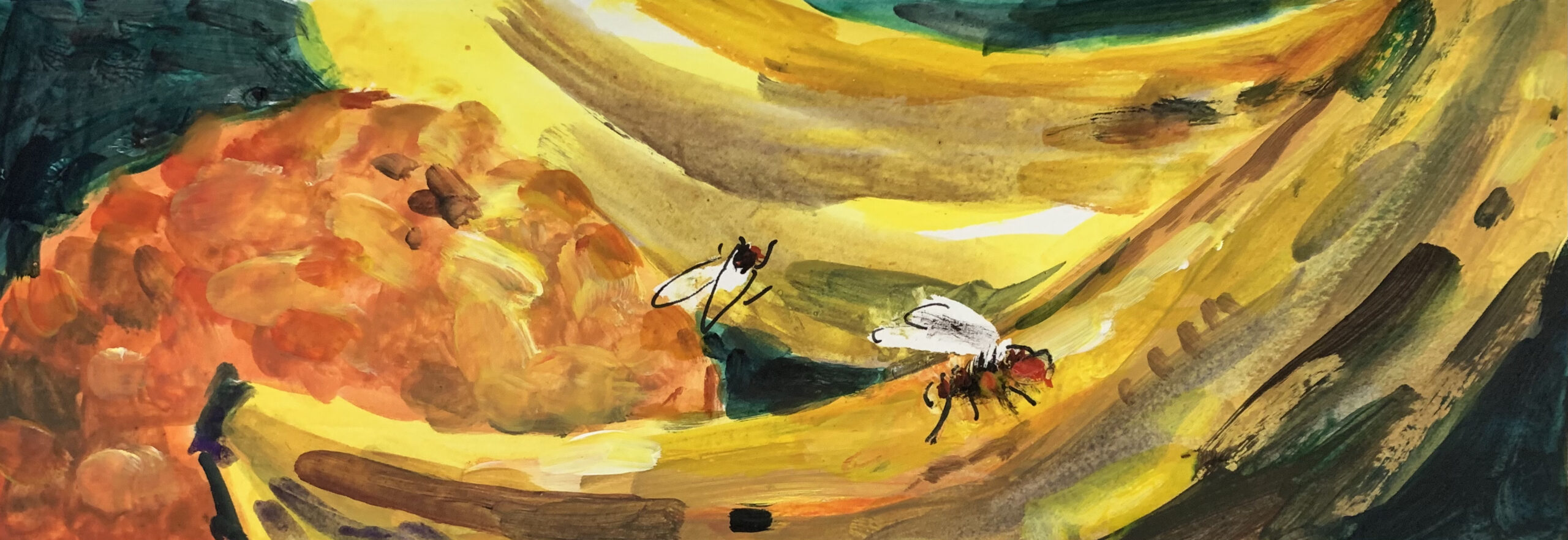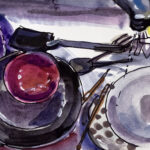Joseph Spagna is a Professor of Biology at William Paterson University in Wayne, New Jersey.
As a scientist working for a state-run institution, I try to answer all the questions that come my way. Not just questions from students but those from members of the public, too. This means that sometimes I am presented with queries that are hard to answer, not because they are complex but because the premise is based on a common misconception.
Recently I was asked, “Everything is supposed to have a collective purpose. What good are fruit flies?”
I was a bit puzzled and did not want to over-interpret the question. So, I asked for clarification. “Well, everything has a job in nature, so everything is good for something. I just don’t get where fruit flies fit in.” Mentally, I ran through some thoughts that might suffice as an answer. “They provide food for birds or bigger bugs.” “Some are useful in experiments.”
I knew my questioner would find both responses unsatisfying. Getting consumed or getting used in an experiment is not a ‘job’—in fact, each is kind of a bummer (unless you sign the release first)! I struggled to come up with a plausible and a reasonably true answer for my friend.
Why was this question so hard to answer?
First, I asked myself why such a question should be so hard. Well, the premise is misguided; that’s not how nature works. Why should everything be good for something else? The ultimate purpose of every individual species is actually kind of rudimentary: it’s merely to get its genes represented in the next generation. This sort of teleology—the idea that every species (humans included) has some ultimate purpose in nature—is a common misconception about the natural world.
It’s a comforting way to think and frankly also a religious one: everything exists for a reason and does something important and unique. Such an inaccurate worldview provides an easy guide for human behaviors and justifies protecting species, even in the face of discomfort or derision. Don’t kill that scary or ugly spider! It kills the pest insects. Or, don’t knock down the beehive, we need those to pollinate the wildflowers!
Just as with the fruit fly example, we have a tendency to consider everything as it relates to our needs and preferences as humans. The bees don’t care about your flowers; they’re just provisioning their hive. The spider isn’t your friend; she’s just eating what wanders into her web. She has no parallel concept of “pests.”
Perhaps the confusion comes from a common oversimplification of the concept of the “ecological niche” as meaning simply a role in nature.
When ecologists use “niche,” particularly in the sense coined by ecologist Hutchinson G. Evelyn, they refer to a model for how an organism interacts with the various elements of its environment. Such models are most useful if they focus on a few key pieces of information to allow for predictions and inferences. If a bunch of variables constitutes a niche—e.g., what it eats, how long it lives, how it reproduces, what feeds on it, where it nests, how much moisture it requires, or how much heat it can tolerate, and so on—the niche is no longer something about the organism. It is the organism. A more useful approach uses mathematical models sampling specific aspects of an organism and makes predictions about how it will interact with varying elements of the organism’s environment. It is both more complex and narrower than a “role” and lacks entirely the value judgment of the “good” it must do.
What about the idea that nature keeps itself in balance and that each species benefits from this harmony?
There’s something there, sure. But there are a couple of problems. First, nature is not really in some sort of harmonious balance. That essentialistic thought-trap denies the histories and denies the changes that are inherent in nature. Environmental changes and evolutionary responses means that in nature, nothing stays the same.
If an ecosystem appears stable, that stability is a temporary state, like a marble resting in a dent on a game board. Dislodge the marble and it will roll around until it comes to rest in another indentation. Is the ‘job’ of each species to keep the entire marble lodged in one particular spot, where they are all ‘stably employed’? Certainly not.
Consider also the commensal microbes that occupy our skin and intestinal tract. Normally these commensals (from the Latin for “shared table”) coexist with their gracious hosts, Homo sapiens, without conflict. All are thought to have partially co-evolved with us, some provide minimal benefits, while others seem to have no detectable effects.
Staphylococcus epidermidis is an abundant skin bacterium that generally rides along and has little, if any, impact on the health of its host. In the case that it might get inside the body through a wound, it can become a serious opportunistic pathogen. So, is its “role” to interact as little as possible or to infect and harm its host as soon as it can? Neither, and both, depending on the changeable reality of its environment.
In nature, removing any part will often destabilize and change an ecological community, but there is no innate value of one community over another.
A shift away from a stable equilibrium point will lead to a period of change and then settle into another equilibrium point. The role for every species might change with a new mix of predators, preys, and producers.
The new balance following an ecological shift is not necessarily greater or lesser than the previous one, and to the species involved, the challenges may be different, but the goal of reproducing is not. The criteria motivating humans to preserve the current balance is usually, again, human valuations of what the current balance provides. This could be the presence of certain desired species, the ecosystem services like pollination of food plants or flood control by plant roots, or even the pleasant outdoor areas for recreation.
Fearing that a new stable state will be less hospitable for humans is reasonable. We too live in the environment. And models will often predict that any new stable state will be less pleasant for us. But does that place the burden of maintaining the current community structure on the species present? Of course not, their primary role is just to survive long enough and well enough to reproduce.
So back to our fruit flies.
Flies will continue to breed, and their maggoty offspring will eat the yeast off the skin of fruit. Some will grow up to fly around, to mate, and to lay eggs before dying. They are fully ‘employed’ with their own ‘jobs,’ just not doing anything we humans require, unless perhaps we steal a few and breed them for a lab colony. The fruit fly’s only imperative is to continue being.
Joseph Spagna is a Professor of Biology at William Paterson University in Wayne, New Jersey. He would like to acknowledge Ellie Miller for assistance with earlier versions of this essay.
Art by Michelle Huang. Michelle read this piece and designed an original painting for Conceptions Review. Michelle is an artist from Sugar Land, Texas, now based out of New York, New York. She specializes in oil painting, known for her expressionist style in both figurative and abstract work. Her website is https://mhuangart.com.
Launched in March 2021, Conceptions Review is interested in the ideas people have about society and the consequences of these ideas. We seek accessible and standalone articles about conception-bending ideas and popular misconceptions. We are open to fields ranging from musicology to history to mathematics to insectology and everything in between.


